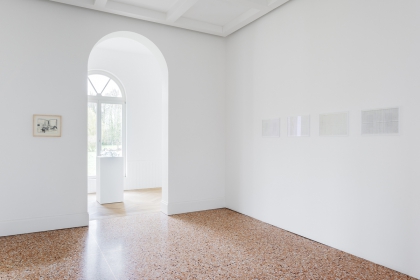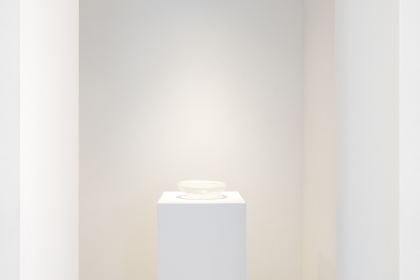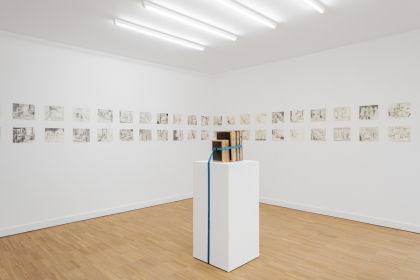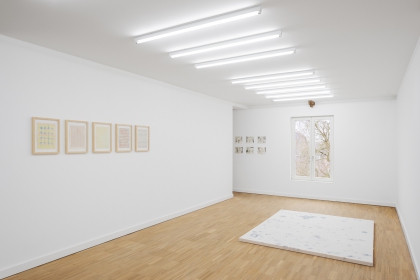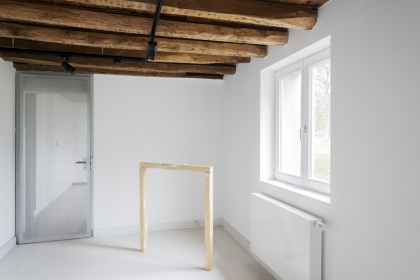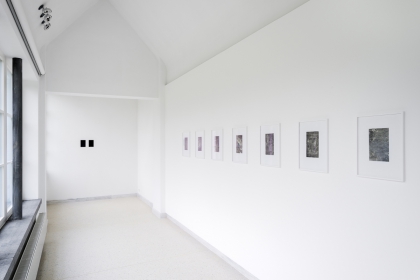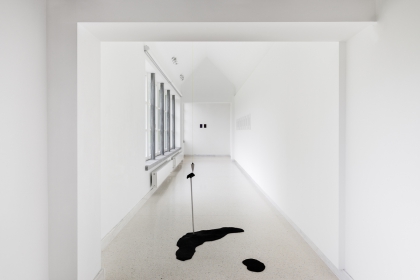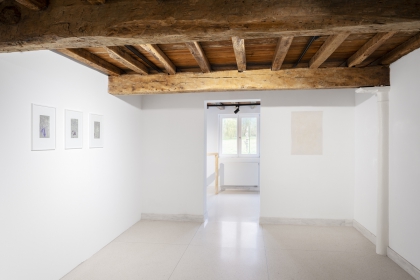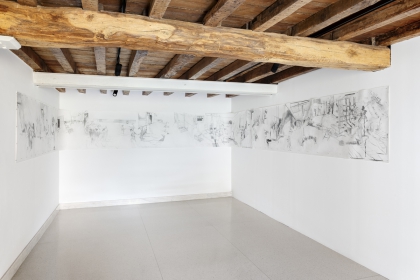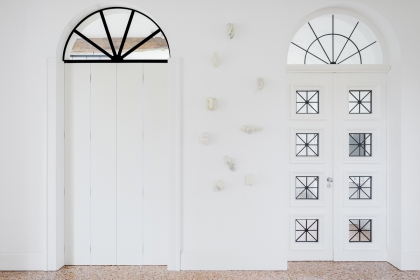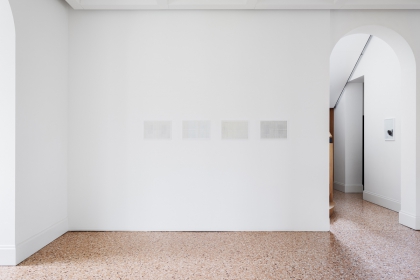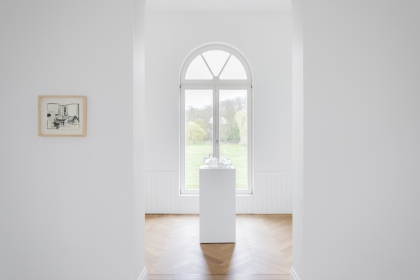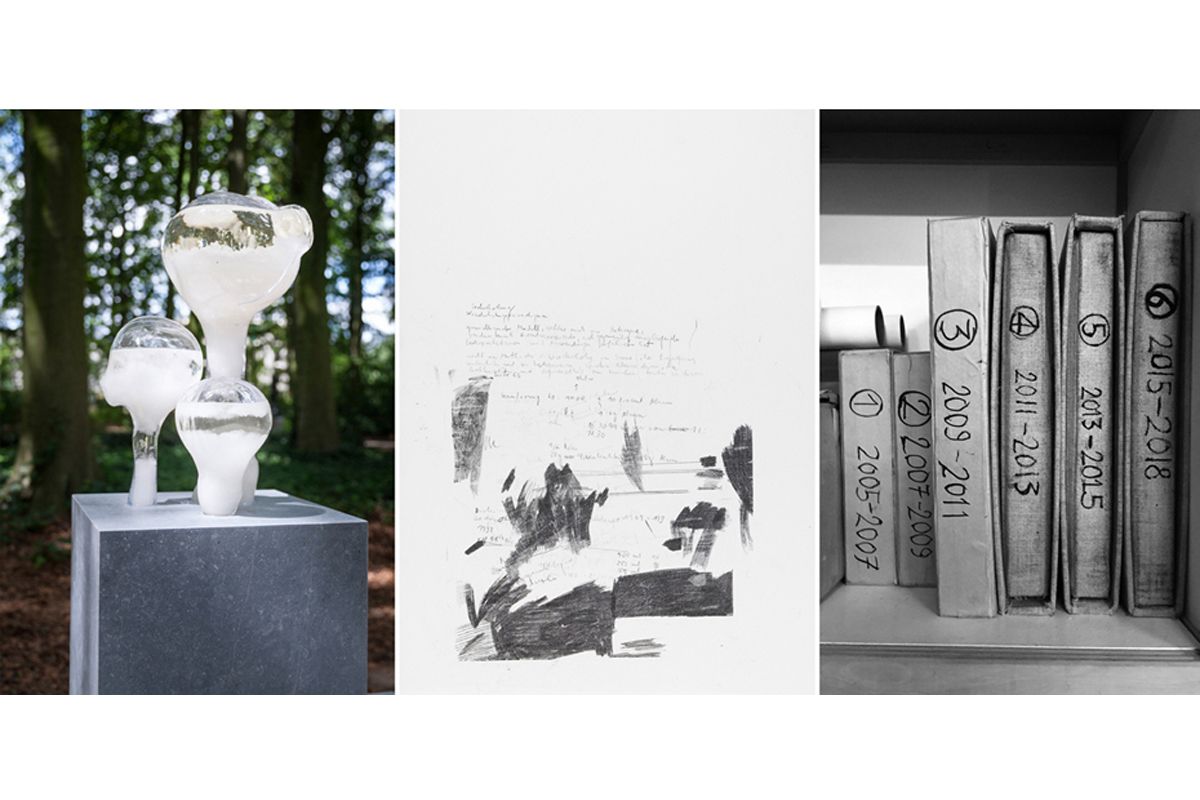
Mystery repeats
The most recent works on paper by the Austrian artist Wiebke Kapitzky (b. 1984) both demand and accept that we gaze at them for a long time. While they do not impose themselves on us and seem to adopt a cautious attitude, they have a prominent presence in the space either individually or as part of a series. Kapitzky leaves behind traces in each of her beloved rectangular fields, although it is hardly anything at all: we see scribbles that could be annotations and which have nestled themselves, layer upon layer, both on and even within the patient paper. Thus we sense something of the time and attention that the artist has lavished upon each of these discrete works. We also feel her fascination with grids and lattices, reminiscent of accounting ledgers or musical scores; with the delicate carbon paper; and with the interplay between foreground and background, choice and coincidence. Although we only perceive surfaces, we are aware of depth; and of the time that these quiet, subtle and untitled works have taken to reach us.
This focus on the work process is echoed in the oeuvre of Isabel Fredeus (b. 1991), who last year won the Young Artist Prize in Middelheim. Having trained as a painter, she is currently mainly making installations and sculptures in materials that emerge as states of aggregation between liquid and solid. In this way, she seeks out tension and balance – sometimes within the same work. A cloudy-looking glass sculpture seems to have been constructed from individual parts that could easily roll off the plinth; clay that has been kneaded by fingers appears to have become petrified into marble; a storm glass feels like it could unexpectedly implode; and a plumb line hovers above a hunk of charcoal like a streamer. We recognise elements from chemical experiment set-ups, and the high tide lines of an atlas. Droplets form when they touch the sailcloth or are pinioned between plastic film. Fredeus’ studio acts as a laboratory in which science and irony complement each other.
The sketchbooks that Stefan Serneels (b. 1968) filled with four hundred drawings between 2005 and 2018 form the starting point for his presentation. The notebooks themselves are displayed monumentally upon a plinth, but we are not allowed to see what is inside: it is the sale of seventy-nine (new) pencil drawings that will help to finance their publication. The artist has pinned them onto the walls of the gallery like butterflies in a collection. Anyone who has seen Serneels’ work before will recognise the rooms, the stairwells, the characters, the empty spaces and the escape routes that haunt the image bank that has formed in his head over the years. The frantic punches of the pencil – somewhere between sabre-gashes and hatching – are not gratuitous ornaments but a signature that disrupts the drawings (but also their possible connection); dissonances in the score. A broad, panoramic work that is rolled out over the walls of the basement space serves as a reprisal of Serneels’ themes.
This is how these three entirely autonomous – but related – visual artists interact with their materials, just as composers work with themes and variations. In their studio, they continually make adjustments to their work processes and take the fight to the material time and time again. Mysterious but polyphonic variations are the result.
Eric Min, 6 March 2019

